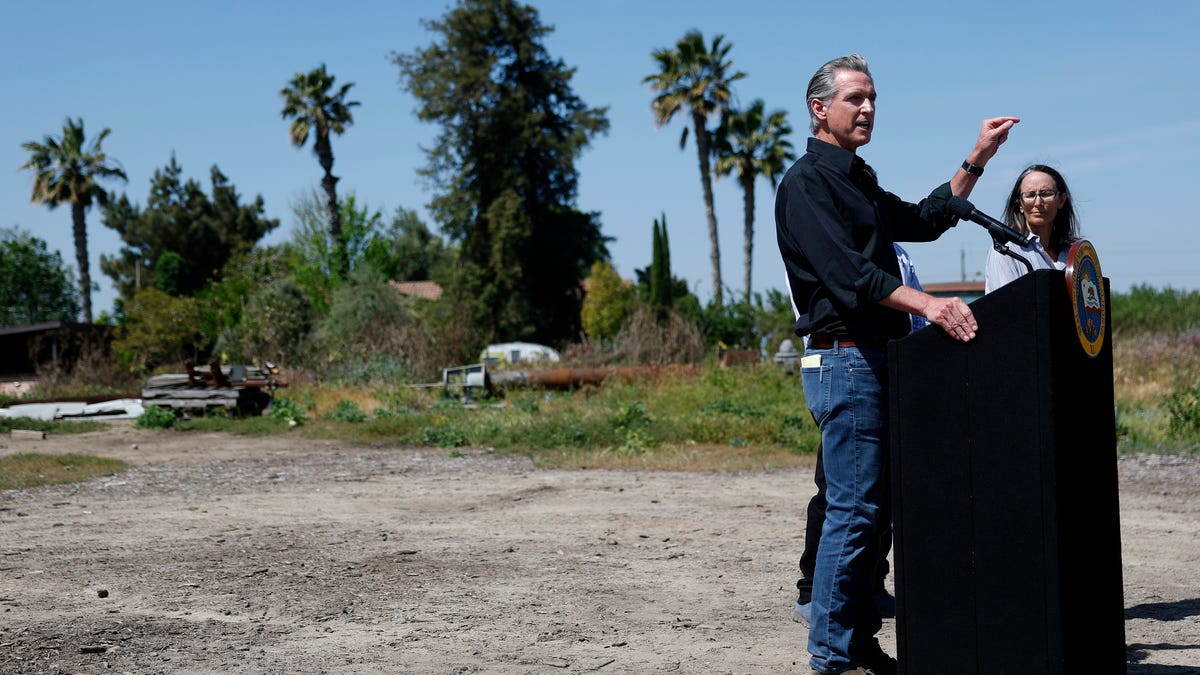
Gavin Newsom says California has world’s 4th largest economy
California was officially named the world’s fourth-largest economy, according to the International Monetary Fund and the US Bureau of Economic Analysis.
unbranded – Newsworthy
Sure, California is a big state, but a global economic force? It’s not called the Golden State for nothing.
California is the fourth-largest economy in the world, Governor Gavin Newsom said on Wednesday.
With nominal gross domestic product of $4.1 trillion, the state now ranks behind only the overall U.S., China and Germany, the announcement said, citing data from the International Monetary Fund (IMF) and U.S. Bureau of Economic Analysis (BEA). Japan ranked fifth at $4.02 trillion.
“California isn’t just keeping pace with the world – we’re setting the pace,” Newsom said in a news release. “Our economy is thriving because we invest in people, prioritize sustainability, and believe in the power of innovation.”
Newsom also took aim at President Donald Trump’s “reckless” tariffs, which he said threaten the state’s progress. “California’s economy powers the nation, and it must be protected,” he said.
White House spokesperson Kush Desai told USA TODAY in an email statement that the state’s economic progress is threatened by “foreign countries stealing the intellectual property of its leading technology firms, poor disaster management letting wildfires run ablaze, and lethal drugs and violent criminals ruining its communities.”
“Under the Trump administration, California has the potential to reach new heights – if the state’s leadership wouldn’t stand in the way,” the statement continued.
When it comes to the rest of the U.S., over $1 trillion separates California and the next-highest state, according to the data.
Here’s where other U.S. states rank.
Which US states have the largest economies?
From largest to smallest economy by nominal GDP, here’s how other U.S. states and Washington, D.C., stack up behind California according to preliminary 2024 numbers from BEA:
- California: $4.1 trillion
- Texas: $2.7 trillion
- New York: $2.3 trillion
- Florida: $1.7 trillion
- Illinois: $1.1 trillion
- Pennsylvania: $1.02 trillion
- Ohio: $928 billion
- Georgia: $883 billion
- Washington: $855 billion
- New Jersey: $847 billion
- North Carolina: $839 billion
- Massachusetts: $781 billion
- Virginia: $764 billion
- Michigan: $707 billion
- Colorado: $553 billion
- Arizona: $552 billion
- Tennessee: $550 billion
- Maryland: $543 billion
- Indiana: $527 billion
- Minnesota: $501 billion
- Wisconsin: $451.3 billion
- Missouri: $451.2 billion
- Connecticut: $366 billion
- South Carolina: $350 billion
- Oregon: $331 billion
- Louisiana: $328 billion
- Alabama: $321 billion
- Utah: $301 billion
- Kentucky: $293 billion
- Oklahoma: $266 billion
- Nevada: $261 billion
- Iowa: $257 billion
- Kansas: $235 billion
- Arkansas: $189 billion
- District of Columbia: $186 billion
- Nebraska: $185 billion
- Mississippi: $157 billion
- New Mexico: $141 billion
- Idaho: $128 billion
- New Hampshire: $121 billion
- Hawaii: $116 billion
- West Virginia: $108 billion
- Delaware: $103 billion
- Maine: $99 billion
- Rhode Island: $82 billion
- Montana: $76 billion
- North Dakota: $75.4 billion
- South Dakota: $75.2 billion
- Alaska: $70 billion
- Wyoming: $53 billion
- Vermont: $46 billion
Contributing: Bailey Schulz, USA TODAY
